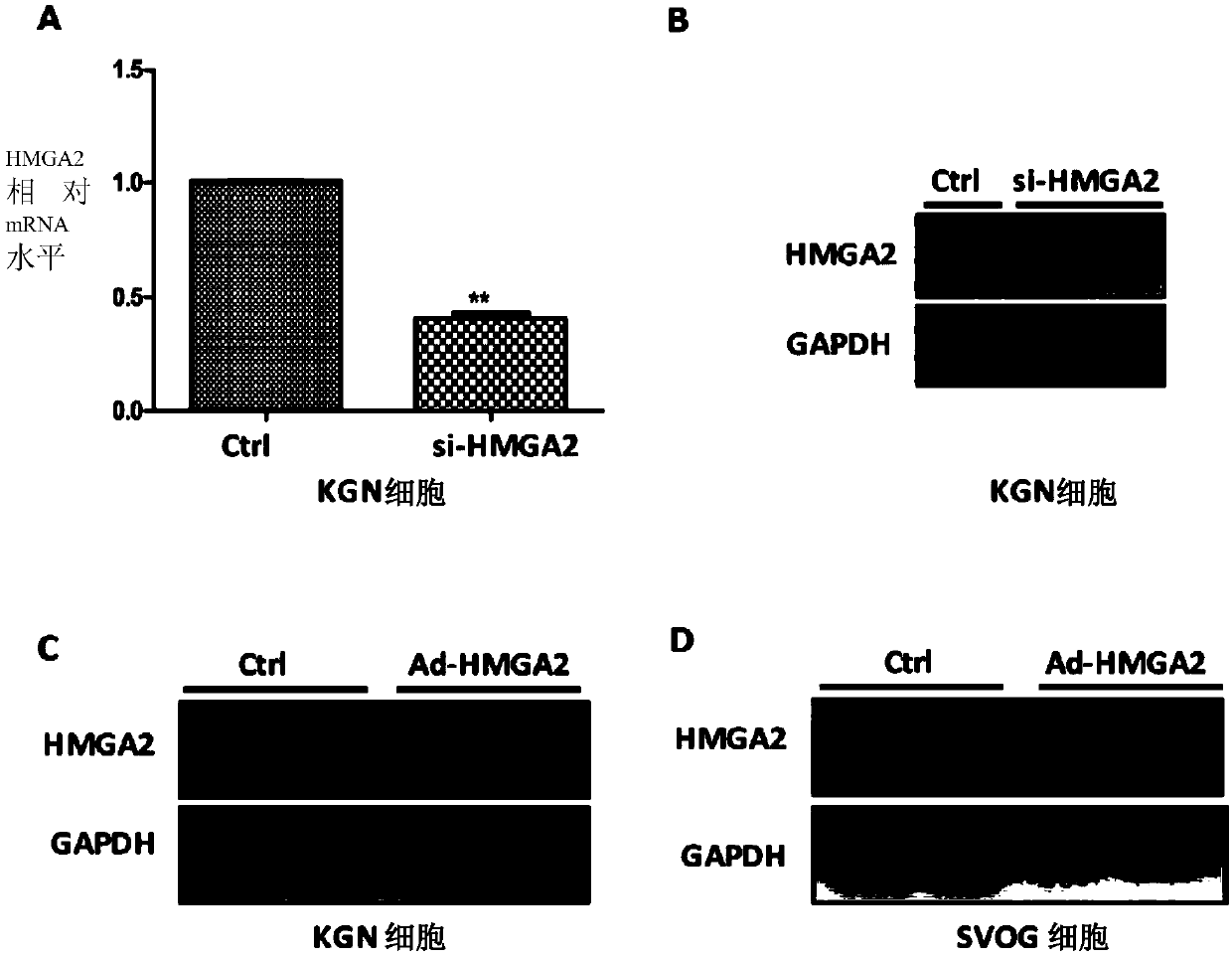Application of HMGA2 gene in polycystic ovary syndrome disease
A technology of HMGA2-IMP2 and uses, applied in the direction of determination/inspection of microorganisms, biochemical equipment and methods, material inspection products, etc.
- Summary
- Abstract
- Description
- Claims
- Application Information
AI Technical Summary
Problems solved by technology
Method used
Image
Examples
Embodiment 1
[0046] Patient Recruitment
[0047] A total of 154 Han women were recruited from the Center for Reproductive Medicine of Shandong University, of which 96 were PCOS patients and the other 58 were controls. Each patient gave a formal written consent. PCOS patients were selected according to the Rotterdam criteria (25): oligo-and / or anovulation; clinical and / or biochemical indicators of hyperandrogenism; and exclusion of other hyperandrogen Polycystic ovary due to hyperprolactinemia, androgen-secreting tumors, Cushing's syndrome, and atypical congenital adrenal hyperplasia. All women were aged between 20 and 35 years and had at least two serum samples with FSH concentrations 1 ng / mL separated by ≥1 month. Control subjects were age-matched females with regular cycles, normal baseline endocrine parameters and bilateral antral follicle counts (single antral follicle count = 6-10), and no family history of diabetes or glucose disturbances. Exclusion criteria included current or re...
Embodiment 2
[0049] Embodiment 2 experimental method and reagent
[0050] Ovarian stimulation and collection of granulosa cells
[0051] Ovarian stimulation and oocyte collection were performed using a long-acting gonadotropin-releasing hormone agonist regimen (27). Ultrasound for follicular development and blood sampling for estradiol (E2) and progesterone (P4) levels were performed every 1-3 days. After sufficient follicle development, human chorionic gonadotropin (hCG) is administered. Oocyte retrieval was performed for follicles >15 mm in diameter by transvaginal ultrasound-guided acupuncture 36 hours after hCG administration. Within 3 days of egg retrieval, no more than 3 embryos are implanted into the uterine cavity. From the day of oocyte retrieval, women receive hCG or P4 treatment. Urine and serum tests for hCG were performed 14 days after embryo transfer. In the case of a positive hCG, an ultrasonography was performed 2 weeks later to confirm a clinical pregnancy. At the ti...
Embodiment 3
[0077]Embodiment 3PCOS patient and control experimenter's basic clinical index
[0078] PCOS-related clinical features were measured in control and patient samples (Table 1). The average BMI (kg / m2) of PCOS patients was 24.89, which was higher than that of controls (21.76; p<0.05). In women with PCOS, luteinizing hormone (LH), total testosterone (TT), anti-Müllerian hormone (AMH), fasting blood glucose (FPG), fasting insulin (FINS), HOMA-IR and other indicators were higher than those in the control group, And follicle stimulating hormone (FSH) decreased. There was no statistical difference in progesterone between the PCOS patient group and the control group.
[0079] Table 1 Clinical characteristics of the control group and patients
[0080]
[0081] All data are mean ± SD
[0082] BMI, body mass index; E2, estradiol; P4, progesterone; PRL, prolactin; T, testosterone; FPG, fasting plasma glucose; FINS, fasting insulin; HOMA-IR, homeostatic model assessment of insulin re...
PUM
| Property | Measurement | Unit |
|---|---|---|
| diameter | aaaaa | aaaaa |
Abstract
Description
Claims
Application Information
 Login to View More
Login to View More - R&D
- Intellectual Property
- Life Sciences
- Materials
- Tech Scout
- Unparalleled Data Quality
- Higher Quality Content
- 60% Fewer Hallucinations
Browse by: Latest US Patents, China's latest patents, Technical Efficacy Thesaurus, Application Domain, Technology Topic, Popular Technical Reports.
© 2025 PatSnap. All rights reserved.Legal|Privacy policy|Modern Slavery Act Transparency Statement|Sitemap|About US| Contact US: help@patsnap.com



